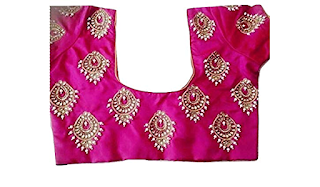Exploring the History and Significance of Traditional Embroidery
Traditional embroidery encompasses a wide range of techniques and styles from different cultures around the world. Here are some popular types of traditional embroidery:
1. Cross-stitch: Cross-stitch is a counted thread embroidery technique where X-shaped stitches are used to create patterns. It is often used to create intricate designs on fabric.
2. Crewel embroidery: Crewel embroidery involves using wool thread to create designs on a fabric. It is characterized by the use of long, smooth, and twisted stitches to create a textured effect.
3. Blackwork embroidery: Blackwork embroidery is a style that originated in Europe during the 16th century. It typically involves black thread on a white or light-colored fabric, creating geometric patterns or intricate designs.
4. Whitework embroidery: Whitework embroidery refers to any form of embroidery that uses white thread on white fabric. It includes techniques like pulled thread work, drawn thread work, and cutwork.
5. Goldwork embroidery: Goldwork embroidery involves the use of metal threads, such as gold or silver, to create elaborate designs. It has been used historically to embellish ceremonial garments and religious textiles.
6. Kantha embroidery: Kantha embroidery is a traditional embroidery style from Bengal, India, where running stitches are used to create intricate patterns. It is often used to create quilts, shawls, and other garments.
7. Sashiko embroidery: Sashiko is a form of Japanese embroidery that uses geometric patterns and running stitches to create decorative designs. It is commonly used to reinforce and decorate fabrics.
8. Phulkari embroidery: Phulkari is a traditional embroidery style from Punjab, India, characterized by vibrant colored threadwork. It often features flower motifs and is used to embellish shawls, dupattas, and other garments.
9. Tambour embroidery: Tambour embroidery is a technique that uses a hooked needle to create a chain stitch on fabric. It is often used to create delicate and intricate designs on bridal wear and haute couture garments.
10. Assisi embroidery: Assisi embroidery originated in Italy and is known for its characteristic style of stitching. It typically features outlined motifs filled with cross-stitches, often leaving the background fabric blank.
These are just a few examples of the many types of traditional embroidery found across different cultures. Each style has its own unique characteristics and cultural significance.
.jpg)


Comments
Post a Comment